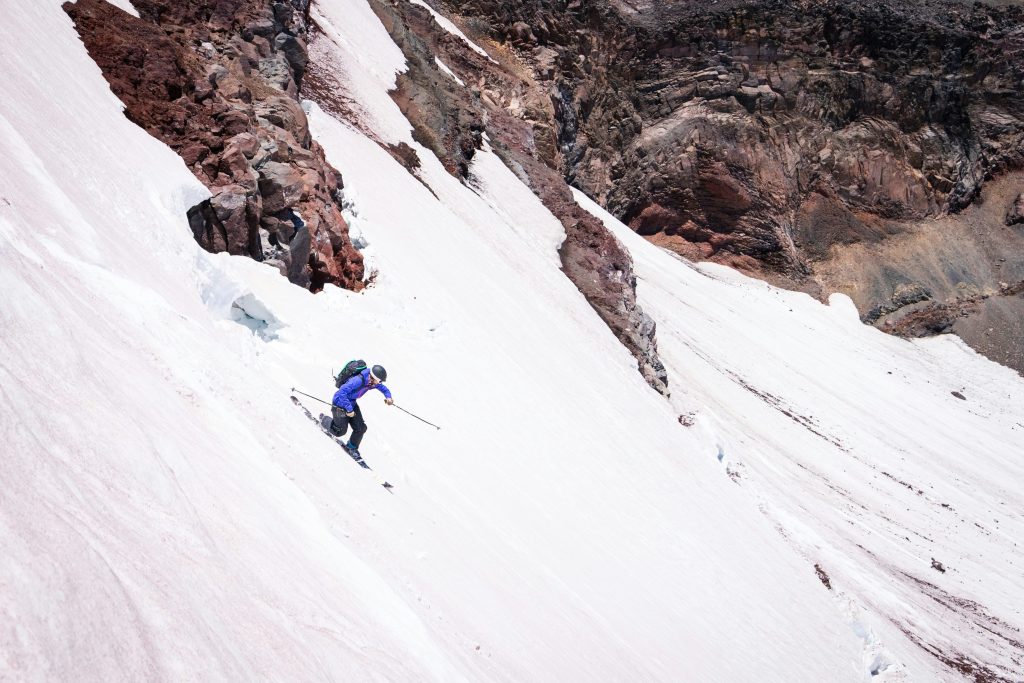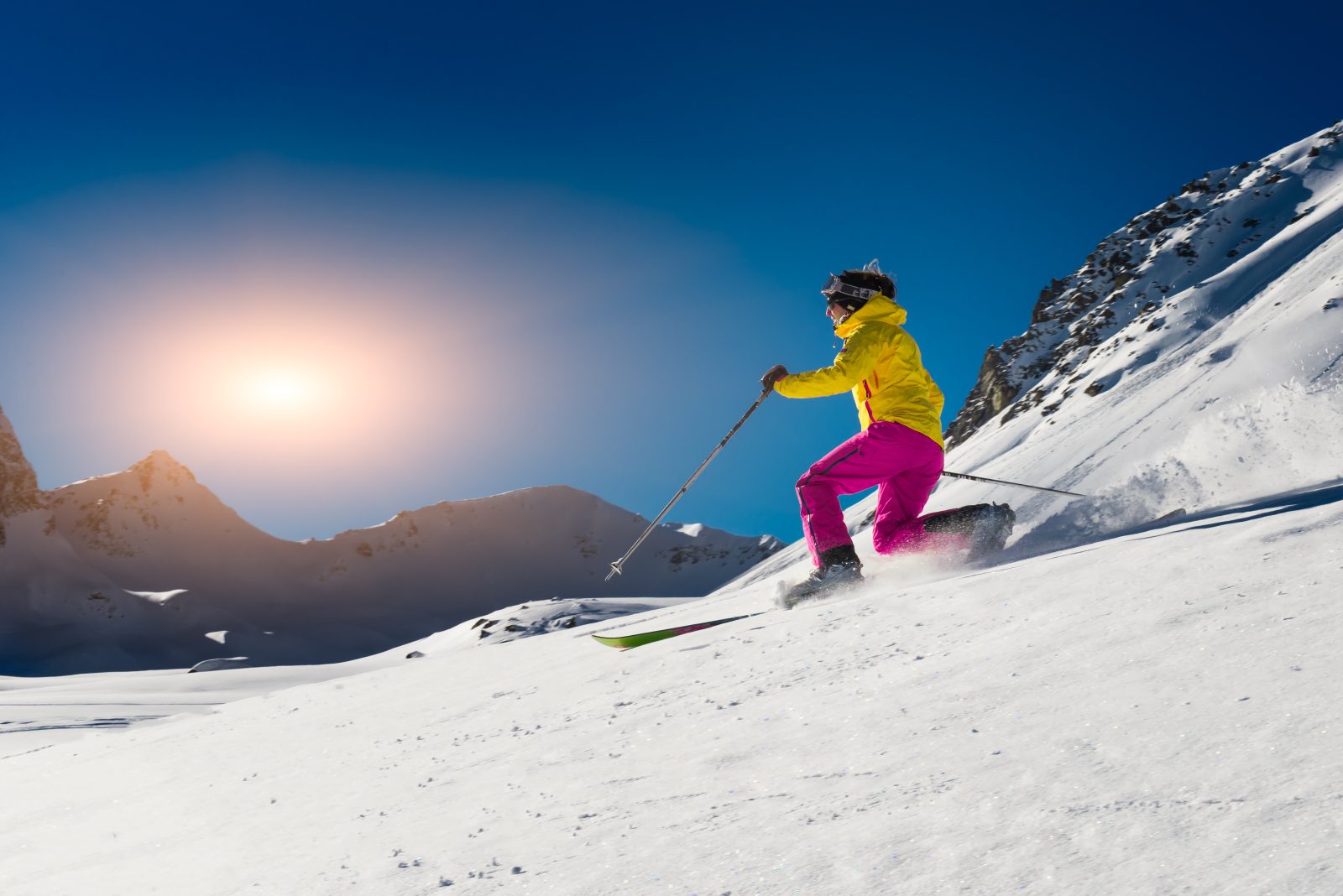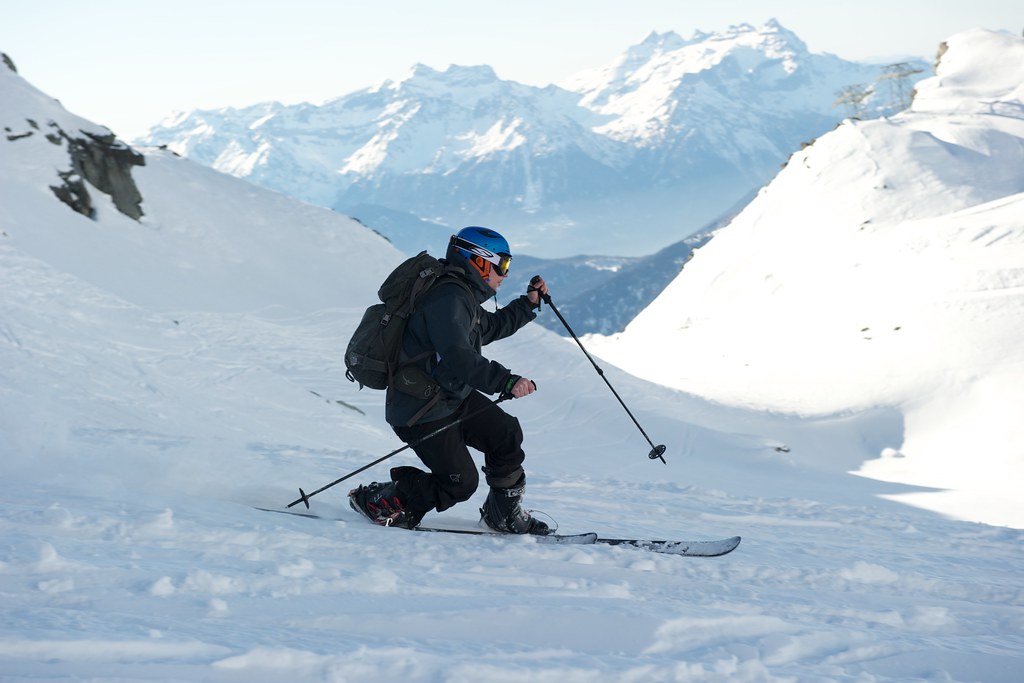If you’ve ever seen someone who looks like they’re doing lunges down the slope while skiing and wondered what it was, it was most likely telemark skiing. Telemark skiing may look peculiar and slightly intimidating at first, but once you give it a go and perfect your technique you’ll be sure to fall in love with this graceful and exhilarating sport!
Find out everything you need to know about telemark skiing in our ultimate guide below!
What is Telemark Skiing?
Telemark skiing, also referred to as ‘telemarking’ is a skiing technique that combines elements of alpine and cross-country skiing (Nordic skiing). The discipline dates back to the 19th century and was introduced by a man named Sondre Norheim who was from the Telemark region of Norway (hence the name).
In telemark skiing, during the turn, the skier lunges and lifts their back heel, which is not attached to the ski like in traditional alpine skiing. The lunging movement should be fluid and rhythmical. The skier’s weight is mostly on the outside ski, however, it is more evenly distributed between both skis than in alpine skiing. Telemark skiing prioritises technique and precision over speed, so you can enjoy the surroundings and the freeing feeling that it gives you.
Telemark skiing can be practised both on and off-piste, without the need for lifts. You can easily trek uphill since your boots and binding will allow you to lift your heels to walk forward. You can also use some of the same equipment used in ski touring, such as skins for the bottom of your skis, to help you trek uphill.

How Difficult is Telemark Skiing?
Compared to other ski disciplines, telemark skiing can be more challenging as it requires a unique technique and lots of physical exertion. The most challenging aspect of telemark skiing is the knee bend during the turns, which is a real quad burner!
If you have a good level of strength and fitness then telemark skiing will feel easier, but anybody can do it, it will just take some time and practise to perfect! Although telemark skiing can be practised by skiers of different levels, it’s best to have some basic knowledge of alpine and cross-country skiing before giving it a go. If you can ski parallel confidently the transition to telemark skiing will be a lot easier!
What Equipment Do You Need for Telemark Skiing?
Telemark skiing requires specific equipment which is quite similar to the equipment needed for ski-touring. If you are heading out into the backcountry, it is essential to make sure you take the proper avalanche safety equipment with you, which you can read about in detail in our Ultimate Guide to Ski Touring.
Key Equipment Needed for Telemark Skiing:
-
- Telemark Boots – The telemark ski boot is only attached to the ski at the front, leaving the heel free to lift which enables the skier to properly lunge when turning. The key difference to an alpine ski boot is that it allows the boot to flex at the toe joints, so the boot has a soft, flexible plastic at the front.
- Skis – You can use any type of alpine ski when telemark skiing, but it is important to take into account the terrain that you will be skiing on and choose the ski that will be best suited to this. Shorter, lighter skis are also recommended for telemark skiing as they will be easier to manoeuvre.
- Telemark Bindings (can usually be attached to any type of skis)
- Skins (for trekking)
- Avalanche Equipment
5 Top Tips for Your First-Time Telemark Skiing
1. Book an Instructor
As with any sport you want to learn, it is incredibly important to learn the correct technique from an experienced, qualified instructor. A telemark instructor will help you start off on the right foot on your telemark skiing journey. They can demonstrate the correct technique in real time and give you feedback so that you can learn effectively and efficiently. An instructor will also ensure that you learn in a safe way and can tailor your lessons depending on your fitness level and skiing ability.
2. Take your Time
Getting the technique just right is crucial when you’re learning telemark skiing, not only because that’s what it’s all about but also because not doing it right can be even more challenging on your body and you don’t want to put yourself through any unnecessary strain. Take your time to learn – it may take some practise and perseverance, but it will be worth it!
3. Enjoy the Experience
Telemark skiing is a great way to discover the backcountry. Enjoy the way up as much as you enjoy the run back downhill. Take it as an opportunity to learn a new sport, discover new terrain and enjoy time in nature. It’s not every day that you get to explore the mountains!
4. Embrace the Burn
Telemark skiing is an excellent workout that not only engages your legs but also your core and upper body. It’s a constant flow of movement, so you will definitely feel the burn after a while, especially in your quads! But the more you do it, the less it will hurt, so embrace the burn and think of it as a way to improve your fitness!
5. Wear Suitable Clothing
The range of movement needed when telemark skiing is a lot greater than when you’re alpine skiing, so make sure that you wear clothes that allow you to lunge fully. Your ski clothes will need to be stretchy to allow for these large movements – you don’t want to end up with a hole in your trousers! Make sure they will also keep you warm, especially if you are heading up high!
Book Your Telemark Skiing Lesson on Maison Sport
Now that you have all the knowledge you need, you are ready to embark on your first telemark skiing adventure!
We’ve made it simple to find and book a top-rated telemark ski instructor, who can open up the mountain for you to create unforgettable experiences.
To book your telemark ski instructor just head to Maison Sport, select your resort and dates, and under the lesson tab select telemark skiing, then choose your preferred instructor and enjoy!
Book telemark skiing lessons on Maison Sport!
You might also like: A Beginner’s Guide to Cross-Country Skiing

